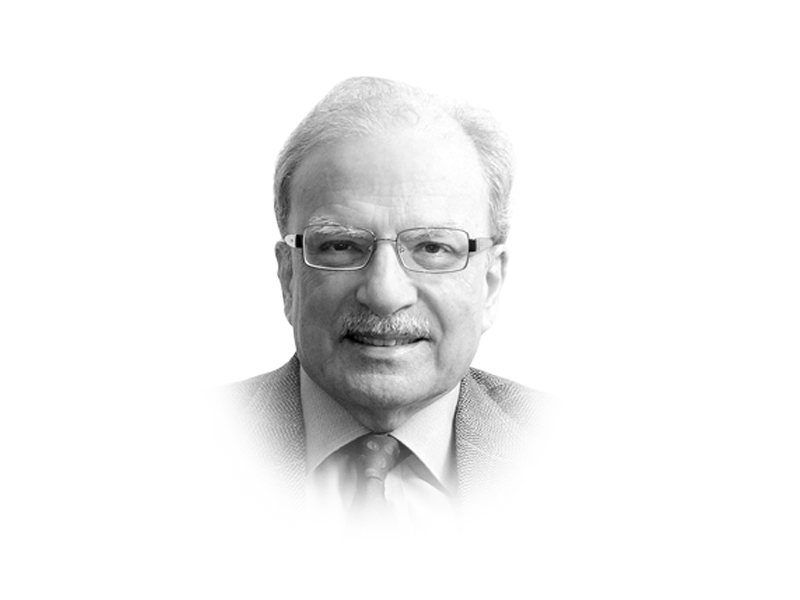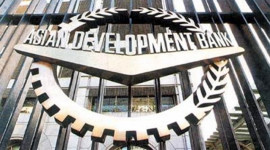
To deal with a difficult economic situation, the new policymakers must frame policies to work simultaneously on three fronts. The most important area that needs attention is the country’s deteriorating fiscal situation. This has reached the point where Islamabad cannot even pay for running the government from the revenues it generates through taxation, let alone make investments in developing physical and human resources. The new rulers will need to come up with a strategy aimed at raising the tax-to-GDP ratio from the current level of nine per cent. I would propose that the new administrations adopt the target of increasing the tax-to-GDP ratio by 1.5 percentage points a year. To achieve this, actions will be needed by both the federal and various provincial authorities. Thought will need to be given to reforming the tax-collection system, in particular the Federal Board of Revenue.
To reform the resource mobilisation aspect of promoting development, the new policymakers may have to do some out-of-the-box thinking. One suggestion that was made in this regard was by the PML-N. Recognising that the Eighteenth Amendment gave the provinces the opportunity to increase self-reliance, the party would like to have some of the more creditworthy cities float bonds in the capital markets to raise finance for some of the large urban infrastructure projects the party is proposing to undertake if it is put in policymaking positions. There are, of course, risks involved in such an approach. Cities, even in more developed countries, can become imprudent in raising money from the markets and spending it on projects that do not produce the returns needed to service the debt that is being accumulated. While there is considerable potential in this approach, the downside risks should also be recognised. That said, projects such as the Metro Bus System in Lahore could be financed by floating municipal bonds. Following approaches such as these, Pakistan could increase the tax-to-GDP ratio by 7.5 percentage points by 2018. This addition to public finance, coupled with improvements in efficiency in the use of public resources, could add two to two and half percentage points to the rate of increase in the national product.
Another area that needs attention is the external side of the development equation. Pakistan will need to quickly develop an approach towards international commerce that will bring in more foreign exchange. Only then will we be able to reduce our dependence on external finance. One is to change the economy’s structure so that it produces more goods and services for international markets. The second is to reorient the direction of commerce so that Pakistan’s approach is more in line with what is suggested by the gravity model of trade. Pakistan must focus on developing deeper trading relations with countries in its immediate neighbourhood. Another component of the work the new administrations must begin to do is to develop a growth strategy that focuses on Pakistan’s many advantages. My list includes at least six — agriculture; small scale manufacturing; a large and very young population; well-educated and well-trained women whose entry into the economy has already begun to give it much-needed dynamism; international trade; and making use of the skills and resources available with Pakistan’s diasporas in three continents.
After announcing such measures, the new administration could initiate the process of building confidence in the future of the country and its economy. It would provide a strong signal to the private players in the country and foreign investors, who may begin to see opportunities for making reasonable returns on their investments. The return of foreign direct investment is, of course, contingent on a significant improvement in the security situation.
If we add all the increments to growth I have suggested, it is within the realm of possibility to double the rate of GDP growth over the next five years. By 2018, the rate of increase in the national product may go up from the present three to 3.5 per cent a year to six to seven per cent.
Published in The Express Tribune, May 6th, 2013.
COMMENTS (21)
Comments are moderated and generally will be posted if they are on-topic and not abusive.
For more information, please see our Comments FAQ

















































@ David_Smith
still at his best.
just a dozen odd comments on this, but just see the no. of comments on Sarabjeet story. Shows clearly where Pakistan's priorities lie.
top priority should be Islam.
Our top priority should be 'Pakistani People'. So new government should avoid listening the World Bank and IMF influenced intellectuals.
These recommendations are not new and might I add self-evident. It is how the new government achieves these objectives/targets that is important. How do parliamentarians who do not pay taxes legislate reduction in tax exemptions. How may we treat all income equally or, at least, near equally? Is it just good international trade policy that increases export and, therefore, help balance the external account or must the economy upgrade its ability to export goods and services. The arguments appear to be constructed somewhat casually.
There are basically three vectors to turning around Pakistan's economy: 1) Massive improvement in Tax to GDP ratio 2) Reducing expenditure including losses from State Corporations 3) Investor confidence in the country
a)Tax to GDP ratio can be increased by placing honest and dedicated officers in FBR and giving FBR autonomy. At present FBR has become dysfunctional . if Tax to GDP ratio needs to be improved beyond 12%, it can only happen if capacity of the provinces to collect taxes is enhanced.All income irrespective of the source needs to be taxed
b) State Corporations are inefficient and most of them are bleeding with losses and waste eg PIA,Steel Mill etc. They need to be run like corporations and may be even privatised. Look at the loot in EOBI and WWF.The waste of security guards etc needs to be stopped.He who needs police security guards should pay for them including police officers
c) With a new government hopefully there will be good governance.This in itself will give confidence.Look at all the textile industries that have moved to Bangladesh,Vietnam etc. Pakistan needs to seriously look at debt management which will drain away 70% of your tax collection in years to come
law and order first priority
@RAW is WAR: I haven't read him recently.... has he given up? His musings were amusing!
Fix your leadership 1st ; Pakistan is falling
my suggestion- keep reading Haq's Musings. You will get a lot of confidence.
I would really like the author to elaborate on why he thinks floating-rate municipal bonds would be a good idea? Does anybody have any ideas?
Unless you route out corruption and establish law and order, when courts can dispense timely justice in resolving disputes with out bribery, when investers know their life and property is safe, and their money will not be ripped of by the corrupt, not a fake cent will come to Pakistan. Prolonged corruption, lack of accountability and lawlessness, it will take at least a generation to purge the Pakistani mindset and bring it back to normality.
You tie yourself in knots over MFN for India which India given you ages ago - something you are bound to reciprocate but not - what trade and commerce are you talking about? First get rid of the paraniod security-state!
@Observer, @Mirza : Well said.
Yes, the bottomline is that the economy has to be rebuilt to improve quality of life of an average Pakistani but that requires - foreign investments which will not come unless terrorism is addressed - greater domestic investments (domestic savings are less than 13% in Pakistan leaving little for investment) which will not come unless law and order situation is improved and there is significant reduction in kidnapping, extortion and target killings in Pakistan's main cities. - significantly reducing loadshedding which cannot happen without tough action on defaulters, tough politically unpopular action to cut down subsidy, reducing cost of generation which in turn requires billions of dollars of investment and in the short term addressing the balance of payment issues which are preventing the import of adequate fuel - improved credit flow to private sector which will not happen until the fiscal deficit is dramatically reduced because t is crowding out private credit. - an educated and healthy workforce which in turn not only requires significant investments in these sectors but also a significant reduction in radicalization of the polity which has quietly allowed 1000+ schools to be blown up without protest, which has allowed dozens of polio workers to be killed in capital cities e.g. Karachi, Peshawar, Queta and even natioal capital of Islamabad.
Sir, who is going to invest in a country where half of the political parties and their leaders are not safe? In addition does any economist have an example where an economy of the size of Pakistani could sustain huge army, active WMD and drone programs with all expensive war toys and perks? Even the USSR imploded when they continued with the armed race with a much bigger economy. What part of the budget would we decrease and by how much % for any progress? Economic progress does not grow on trees under the terrorism. Top priority is to get rid of the terrorists then cut down non productive expenses and start from there.
Very sound and sensible policies for another country but not for Pakistan. Sir, it is utopian and will not work here. It is suitable for a country like Vietnam or Thailand but not for Pakistan. Like most economists you choose to ignore the huge cultural and political problems. Sir, we may have a "a large and very young population" but it is largely brain dead and a huge liability. Offer a German manager some beer then after he is off guard ask him what he thinks of the Pakistani work ethic ? . You expect to collect tax in this corrupt land. Good luck. Issuing municipal bonds. Is that Islamic finance ? I think our Mullahs will think not. . Change the dogmatic medieval Pakistani mindset first. Then your policies may work.
Strange, the author makes no mention of setting priorities and cutting on spending that that doesn't help the economy or people's welfare as part of the solution.
It is easy to say that export growth is needed. But, doesn't that require attracting investment which in turn requires changing the national priority from one of a security state, peace with neighbors, dropping state policy of using terrorism for geopolitical games, investing in development as opposed to the military?
Urban projects will attract tourists to these cities. If we are looking for development investment, we must bring in the grants and promote civil society and NGOs to work with international donors. In parallel, the priorities should be; education, energy, taxation, followed by other civic amenities like healthcare. Education must include vocational skills development. Each province should float bonds with return to investors for such like investments.